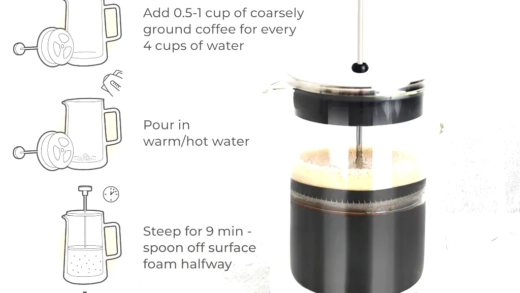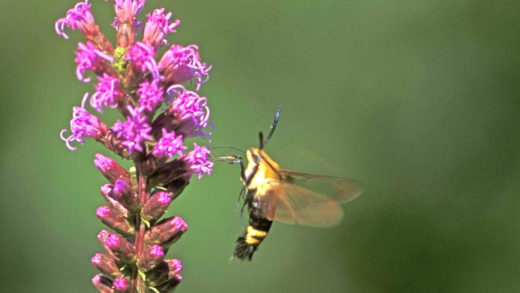This article provides a comprehensive overview of bug spray, detailing its ingredients, effects on humans and pets, and best practices for use. It highlights user experiences, emphasizing both the effectiveness and safety concerns associated with bug spray. Key takeaways include the importance of reading labels, using protective gear, and considering environmental impacts.
Types of Insects Targeted by Bug Spray
Bug spray is designed to tackle a variety of pests that can invade our homes and outdoor spaces. Common insects targeted by bug spray include:
- Mosquitoes: Known for their annoying bites and potential disease transmission.
- Ants: These persistent pests can invade kitchens and gardens, searching for food.
- Roaches: Cockroaches are not just unsightly; they can also pose health risks.
- Flies: Houseflies can spread bacteria and are a nuisance in homes.
- Fleas: These tiny pests can infest homes and pets, causing discomfort.
Understanding which pests bug spray is designed to eliminate helps in choosing the right product for your needs. Each type of insect may require a different formulation of bug spray to be effective, making it essential to read labels and select appropriately.
How Bug Spray Actually Kills Insects
Bug spray works through various mechanisms to eliminate or repel insects. The primary methods include:
- Neurotoxins: Many bug sprays contain neurotoxic chemicals that disrupt the nervous system of insects, leading to paralysis and death.
- Repellents: Some ingredients act as repellents, making the environment less inviting for pests.
- Contact Insecticides: These kill insects on contact, providing immediate results.
The effectiveness of bug spray depends on the active ingredients and their concentration. Understanding these mechanisms clarifies how bug spray can effectively manage insect populations, allowing for better pest control strategies.
Common Ingredients Found in Bug Spray
Bug sprays contain various ingredients that serve specific purposes. Common chemicals include:
- DEET: A widely used insect repellent known for its effectiveness against mosquitoes.
- Pyrethroids: Synthetic chemicals that mimic natural insecticides derived from chrysanthemum flowers.
- Picaridin: An alternative to DEET, effective against a broad range of pests.
- Permethrin: Often used for treating clothing and gear, providing long-lasting protection.
Identifying what goes into these sprays allows consumers to make informed choices based on safety and effectiveness.
Effects of Bug Spray on Humans and Pets
While bug spray is effective for pest control, it can pose risks to humans and pets. Potential effects include:
- Skin Irritation: Direct contact can cause rashes or allergic reactions.
- Respiratory Issues: Inhalation of spray can lead to coughing or difficulty breathing.
- Long-term Health Risks: Some ingredients may have long-term effects on health, especially with repeated exposure.
Understanding these safety concerns is crucial for minimizing risks associated with bug spray usage.
Precautions When Using Bug Spray
To ensure safe application and handling of bug spray, consider the following precautions:
- Read Labels: Always follow the manufacturer’s instructions carefully.
- Wear Protective Gear: Use gloves and masks when applying to avoid skin contact and inhalation.
- Apply in Well-Ventilated Areas: Ensure proper ventilation to reduce inhalation risks.
- Avoid Contact with Pets and Children: Keep treated areas off-limits until dry.
Learning how to use bug spray safely helps minimize potential risks, ensuring effective pest control without compromising safety.
Effectiveness of Bug Spray Compared to Other Pest Control Methods
Bug spray is a popular choice for pest control, but how does it stack up against other methods? Here’s a closer look:
- Traps: These can be effective for certain pests like ants and roaches. However, traps often require patience and may not eliminate entire infestations quickly.
- Natural Remedies: Options like essential oils can deter insects, but their effectiveness may vary. They often lack the potency of chemical bug sprays.
- Professional Extermination: Hiring experts ensures thorough treatment but can be costly. Bug spray, on the other hand, offers a more immediate solution for homeowners looking for quick results.
While bug spray provides fast action against insects, its effectiveness can vary based on the pest type and infestation level. Understanding these differences helps consumers choose the right pest control strategy.
Environmental Impact of Bug Spray
Bug spray can have significant environmental consequences. Its use raises concerns about:
- Non-target Species: Many bug sprays affect beneficial insects, like bees, that play crucial roles in pollination.
- Water Contamination: Runoff from treated areas can lead to chemical accumulation in water bodies, impacting aquatic life.
- Soil Health: The chemicals in bug sprays can disrupt soil ecosystems, affecting organisms that contribute to soil fertility.
Awareness of these environmental impacts is essential for responsible bug spray use. Opting for eco-friendly alternatives when possible can help mitigate these risks.
What to Do If You Inhale Bug Spray
If bug spray is accidentally inhaled, immediate action is crucial. Here are steps to follow:
- Move to Fresh Air: Get outside or to a well-ventilated area immediately.
- Monitor Symptoms: Watch for coughing, difficulty breathing, or dizziness.
- Seek Medical Attention: If symptoms persist or worsen, contact a healthcare professional.
Knowing how to respond to inhalation can prevent serious health issues. Always take precautions when using bug spray to minimize risks.
Dealing with Skin Contact
In case of skin contact with bug spray, follow these first aid steps:
- Wash Immediately: Rinse the affected area with soap and water for at least 15 minutes.
- Remove Contaminated Clothing: Take off any clothing that has come into contact with the spray.
- Watch for Reactions: Look for signs of irritation or allergic reactions, and consult a doctor if necessary.
Understanding these first aid measures ensures prompt action, reducing the risk of adverse effects from bug spray exposure.
Personal Experiences with Bug Spray
Real-life anecdotes can shed light on the practical use of bug spray and its effects. Many users have shared their stories regarding both the effectiveness and the mishaps that can occur when using these products.
- Family BBQ Success: One user recounted a family barbecue where mosquitoes were relentless. They applied a bug spray containing DEET before guests arrived. The result? A successful event without the buzzing pests ruining the fun. This highlights how effective bug spray can be in outdoor settings.
- Unexpected Skin Reaction: Another individual shared an experience where they applied bug spray and later noticed a rash on their skin. After consulting a doctor, they learned they had a mild allergic reaction to one of the ingredients. This underscores the importance of testing bug spray on a small skin area before full application.
- Pet Safety Concerns: A pet owner noted their dog became restless after they sprayed bug spray indoors. They quickly opened windows and ensured their pet had fresh air, but this experience prompted them to consider pet-safe options next time. It’s a reminder of the potential effects bug spray can have on pets.
- Camping Adventure: A camper shared how they relied on a natural bug spray made with essential oils while hiking. They found it less effective against aggressive mosquitoes compared to traditional sprays. This experience illustrated the trade-offs between natural and chemical insecticides.
These anecdotes reflect the diverse experiences users have with bug spray, highlighting its effectiveness, potential risks, and the importance of making informed choices.
Conclusion
Bug spray serves as a valuable tool in managing pest populations, effectively targeting insects like mosquitoes, ants, and roaches. Understanding how bug spray works, its common ingredients, and the potential effects on humans and pets is essential for safe use. Always follow precautions, such as reading labels, wearing protective gear, and applying in well-ventilated areas. Additionally, considering environmental impacts and alternatives can lead to more responsible pest management. Personal experiences shared by users reveal both the benefits and challenges of using bug spray, reinforcing the need for informed decisions. By prioritizing safety and efficacy, individuals can effectively control pests while minimizing risks to themselves and the environment.





Comments are closed.